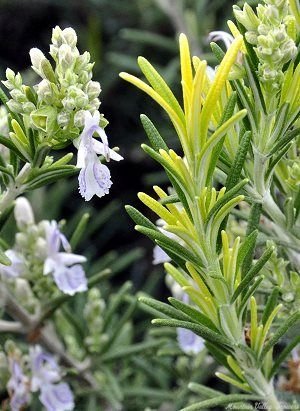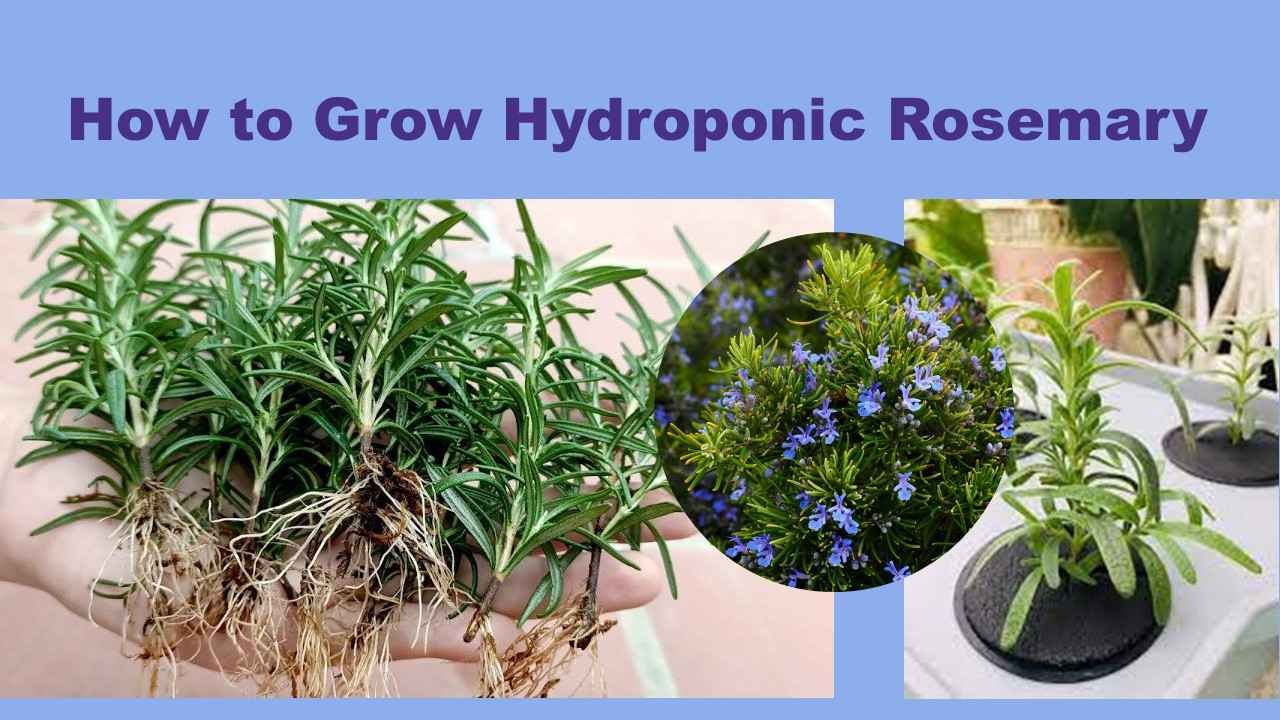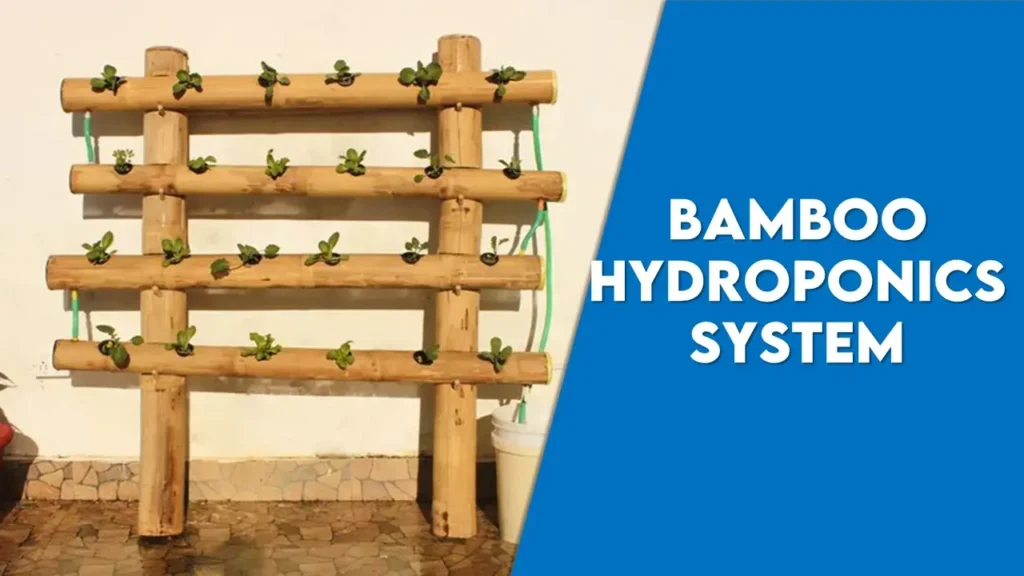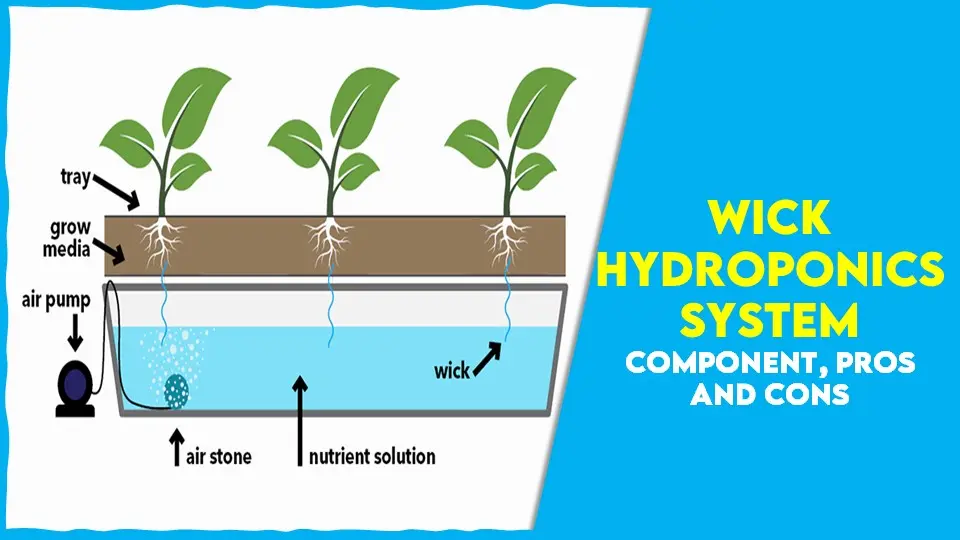How to Grow Hydroponic Rosemary: A Detailed Guide
Rosemary (Rosmarinus officinalis) which is a very common herb, famous for its unique fragrance belongs to the family Labiatae. Phytochemicals like rosmarinic acid camphor (17.1%), camphene (6.00%), limonene (6.23%), linalool (5.70%) caffeic acid, ursolic acid, betulinic acid, carnosic acid, and carnosol are present in rosemary and essential oil content percentage is about 10-20%. In this blog, we will focus about how to grow hydroponic rosemary.
It is widely used in versatile ways like in the culinary seasoning, in the herbal and perfumery industry, etc. It also has a medicinal value, it has the capacity ti cure headache, stomachache, rheumatic pain, nervous agitation, hysteria, depression, spasms etc. Some varieties of rosemary namely “Benenden Blue”, Miss Jessopp’s upright(good for hedges,dark green, highly aromatic leaves), Severn Sea, and Sissinghurst Blue have gained The Royal Horticultural Society’s Award of Garden Merit.

Other well-known varieties are -Barbecue rosemary (excellent flavor and aroma)Albus, Arp(sturdy growth habbit and silver-green foliage), Aureus, Blue Boy, Blue Rain, Golden Rani, Gold Dust, Haifa, Irene, Lockwood de Forest, Ken Taylor, Majorica Pink, Pinkie, Roseus, Salem, Pyramidals, Sudbury Blue(small bright blue flowers), Tuscan Blue(best rosemary variety for topiaries), Wilma’s Gold, etc.

While most of the herbs grow vigorously in the hydroponic system, growing hydroponic rosemary is a little bit tricky. Proper maintenance and care are required during the time of germination, growing, and harvesting. It also needs proper nutrient management, a growing medium, a light system, etc.
Reason for Increasing Interest in Growing Hydroponic Rosemary:
Now a days farmers show a great interest for growing hydroponic rosemary because-
Year-Round Accessibility:
Traditional farming is subject to seasonal limitations, but hydroponics provides a solution. Hydroponic broccoli cultivation is not bound by climate or weather constraints, enabling year-round production. Hydroponics can grow vegetables in controlled environments and provide continuous supply which can easily meet the consumer’s demand easily.
Space Management:
In a hydroponic system, we can easily manage the space problem. According to the space we have, we can set our hydroponic system to grow hydroponic rosemary.
Water Conservation:
Very little amount of water is required in a hydroponic system compared to the traditional cultivation and water is recycled here. So, it is an environmentally friendly sustainable method.
Profitable Approach:
As the yield is very high and crop produced year-round,and its recent demand is very high, so growing hydroponic rosemary is very profitable to the framers.
Suitable Variety for Growing Hydroponic Rosemary:
| Variety | Description |
| Rosmarinus officinalis | Bluish-purple flowers required very little amount of water. |
| Prostrates | Spreading type, form a beautiful green carpet. |
| Golden rain | It has a golden-yellow leaf margin. |
| Blue spiders | Purple blue flower, long flowering period. |

Materials Required for Growing Hydroponic Rosemary:
- Disease-free seed or healthy seedlings for proper germination.
- Growing media like rock wool, perlite, etc.
- Planting tray.
- Water pump.
- Bucket or pots.
- Oxygen pump.
- Hydroponic nutrient solution (mixture of potassium nitrate,potassium phosphate, calcium nitrate, and magnesium sulphate, iron sulphate, boric acid, and zinc sulphate is used as a nutrient solution in the hydroponic system.).
- Water.
- pH testing device for maintaining pH.
- EC meter for maintaining EC
- LED lights.
How to prepare The Hydroponic System for Growing Hydroponic Rosemary:
Selection of Seeds Or Cutting Material:
By Cutting Material:
It is important to select a healthy, disease-free cutting material to propagate. Then you have to remove all the bottom leaves to get a clean stem segment.

By Seed:
Choosing a healthy seed from a reliable store is very important for proper germination. Then soak the plant in warm water for about 6-12 hours.

Prepare the container and transfer the cutting:
Choose a proper-sized pot with good drainage to resist water logging conditions. Then place the seedlings or cutting in the container and submerge the bottom part of the seedlings or cuttings in water. Add nutrient solution if needed. 6 hours per day of sun exposure is needed for proper germination.
Rosemary shows a low germination rate around 30%. So, for commercial purposes, it is advised to grow by cuttings which is more viable. From seed, it will take 10-12 weeks for harvesting while from cutting it will take about 6-8 weeks for proper shape to harvest.
Media Preparation:
Rockwool media is best for seed germination in hydroponics systems.
The Hydroponic System Used to Grow Hydroponic Rosemary:
Among all the hydroponics systems (like EBB and flow method, nutrient film technique, deep water culture method, dutch and bucket method), the nutrient film technique is best for growing hydroponic rosemary.
Let’s discuss about Nutrient Film Technique And Analyse Why It Is Suitable for Growing Hydroponic Rosemary:
The Nutrient Film Technique (NFT) is a hydroponic method where plants are positioned in a thin water stream carrying all essential dissolved nutrients for their growth. This stream circulates through growth tanks housing the Rosemary plant roots, allowing nutrient absorption and simultaneous exposure to oxygen due to the shallow water and suspended roots. That’s why the Nutrient Film technique is a suitable option for growing hydroponic rosemary.

How to Grow Hydroponic Rosemary:
Transfer The Seedlings to The Hydroponic System:
After 2-3 weeks of germination seedlings are ready to transfer in the hydroponic system. Proper care is necessary during the transfer of seedlings to avoid root damage.

Maintaining pH Level for Growing Hydroponic Rosemary:
Maintaining appropriate pH levels is important for proper growth and development of rosemary in the hydroponic system because the pH level is directly proportional to nutrient availability. pH range should be maintained between 5.5-6.5 for growing hydroponic rosemary.
Nutrient Solution of Hydroponic Rosemary:
Proper nutrient balance is necessary for healthy growth and to avoid nutrient toxicity and deficiency in the hydroponic system.
2 ounces of potassium nitrate, ½ ounce of potassium phosphate, 3 ounces of calcium nitrate, and ½ ounces of magnesium sulfate dissolved in 25 gallons of water with ½ pinch of iron sulfate, boric acid, and zinc sulfate is used as a nutrient solution in the hydroponic system.
Maintaining EC Value:
Maintaining EC range from 1.2 to 1.8 Ms/cm is necessary to maintain nutritional balance because EC is directly proportional to nutrient availability.

Light Requirement:
Light plays a vital role in the growth stage of rosemary in the hydroponic system. Daily 12 to 16 hours of light is necessary for photosynthesis activity. LED light acts as a suitable artificial light source in hydroponic systems. Strong sunlight is not preferred to avoid wilt or burn.
Maintaining Temperature:
The optimum temperature range for growing hydroponic rosemary is 20-25 degrees C.
Maintaining Proper Space:
15 to 20 cm spacing is necessary for growing the roosts properly and spread out fully and also to avoid disease occurrence.
Summary of The Parameters:
| pH | 5.5 to 6.5. |
| EC | 1.2 to 1.8 Ms/cm |
| Optimum temperature | 20-25 degrees C |
| light | Daily 12 to 16 hours |
| Humidity | 75% |
Pruning Hydroponic Rosemary:
Regular pruning is important to give it a bushy shape and to spread properly. Unhealthy branches are removed by pruning and it also helps in proper air circulation.
Pest and Disease Management in Hydroponic Rosemary:
Some common pests that attack hydroponic rosemary are aphids, mites, and whiteflies. Proper inspection of leaves and underside of plants is necessary to control the pests. We can spray soap water or neem extract or any organic measures to control the pests.
Diseases like root rot, leaf mould, botrytis, etc. are very common in hydroponic rosemary. Proper ventilation can resist the spread of diseases. Also, you should use clean equipment to avoid disease occurrence.
How to Harvest Hydroponic Rosemary:
Multi-harvesting is followed to harvest rosemary.
First Harvesting:
After 4-6 weeks of planting, hydroponic rosemary is ready to harvest and it will promote more side branches to the plants and a bushy shape.
Continuous Harvesting:
For better flavour and aroma, select full-grown and healthy rosemary leaves during continuous harvesting. Proper growth and vigour of plants is maintained by continuous harvesting.

Cleanliness:
Maintain hygiene by sanitizing equipment and regularly cleaning the hydroponic system to prevent algal and fungal growth.
Challenges and Innovations in Growing Hydroponic Rosemary:
Despite the various benefits offered by hydroponic rosemary, obstacles such as high initial setup costs and the requirement for specialized knowledge may deter certain farmers. Hydroponics can grow vegetables and herbs in controlled environments and provide continuous supply which can easily meet the consumers.
Some Tips for Growing Hydroponic Rosemary:
- Proper drainage should be maintained to avoid water logging conditions.
- Healthy and disease-free propagating material is mandatory.
- Diseases and microbes infestation can be reduced by maintaining proper aeration in the hydroponic system.
- Always use clean equipment.
- Hygiene and cleanliness should be followed in hydroponic systems.
- Monitor pH and EC levels regularly.
- Regularly monitor the water pump activity.
- Check the nutrient level to avoid toxicity or deficiency.
- pruning is necessary at regular time intervals to give it a bushy appearance and side shoot growth.
- Continuous harvesting promotes vigorous side shoot growth and yield. That’s why it is recommended to follow.
Conclusion:
This blog gives proper guidance on how to grow rosemary in a hydroponic system. Growing rosemary in this controlled environment improves the yield and gives nutrient rich produce. Also hydroponic systems can reduce pest and soil-borne disease occurrence which is more advantageous to farmers. Hydroponics is an environmentally friendly alternative to soil-based cultivation due to its water-saving aspect. With proper management and attention to detail, hydroponic rosemary production can result in consistently high-quality herbs. Despite initial setup costs, the long-term benefits of improved resource utilisation and consistent crop quality make hydroponics a viable and promising method for growing hydroponic rosemary in modern agriculture.
Join Our Hydroponics Growers Group!
Connect with fellow hydroponics enthusiasts, share your ideas, ask questions, and grow together as a community.
👉 Join WhatsApp Group






